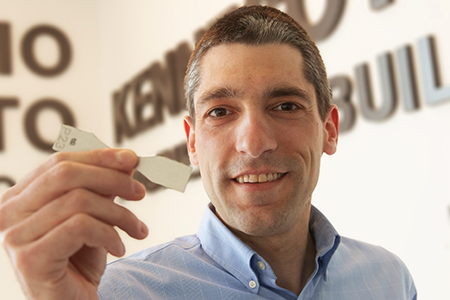University of Utah mechanical engineering professors have received a $3 million grant from the U.S. Department of Defense to continue research on a better method to 3D print metal parts that could significantly speed up the process while also making it more economically viable.
Recipients of the grant include U mechanical engineering associate professor Bart Raeymaekers, assistant professor Ashley Spear, professor Tim Ameel and assistant professor Owen Kingstedt, with assistant professor Wenda Tan as a collaborator. It is also in collaboration with the Colorado School of Mines and Carnegie Mellon University. (Pictured left to right: Ashley Spear, Tim Ameel, Bart Raeymaekers, Owen Kingstedt and Wenda Tan.)
Currently, when manufacturers 3D print a metal part — also known as metal additive manufacturing — they typically rely on trial-and-error to figure out the right parameters with which to print the part. That includes figuring out the settings for the laser power and the speed in which the laser scans the object, among many possible parameters.
“It can take several months to years to tune a metal additive printer to obtain the properties to make the desired product,” Raeymaekers said.
But the team’s research is in creating a cloud-based database of printed samples that can be accessed to generate the for a new part being printed. With this new process, manufacturers would use software algorithms that can take the settings of other printed parts and leverage machine learning to predict what parameters to use for a new part that has never been made before.
“It allows you to think differently about how you manufacture a part,” Raeymaekers said. “You now have an ability to manufacture them in an entirely different way so you can design them in a totally different way.”
Not only would it permit manufacturers to create parts more quickly by eliminating the guess work, it also could allow them to create different parts easily with the same printer.
 “It allows companies that want to use our methodology to use metal additive manufacturing economically,” Raeymaekers said. “It lets them build a door hinge one day but the next day print something else, diversifying what a business can manufacture.”
“It allows companies that want to use our methodology to use metal additive manufacturing economically,” Raeymaekers said. “It lets them build a door hinge one day but the next day print something else, diversifying what a business can manufacture.”
Through the grant, the team is focused on building metal parts for the military, such as components for light vehicles designed to withstand improvised explosive device attacks or for jet fighters. Raeymaekers also believes that in the future, the process could benefit any other kind of metal 3D printing process, including for producing parts for medical devices or commercial aircraft.
With the new funding, the researchers will also organize workshops to educate local manufacturers about how metal additive manufacturing can help their businesses.